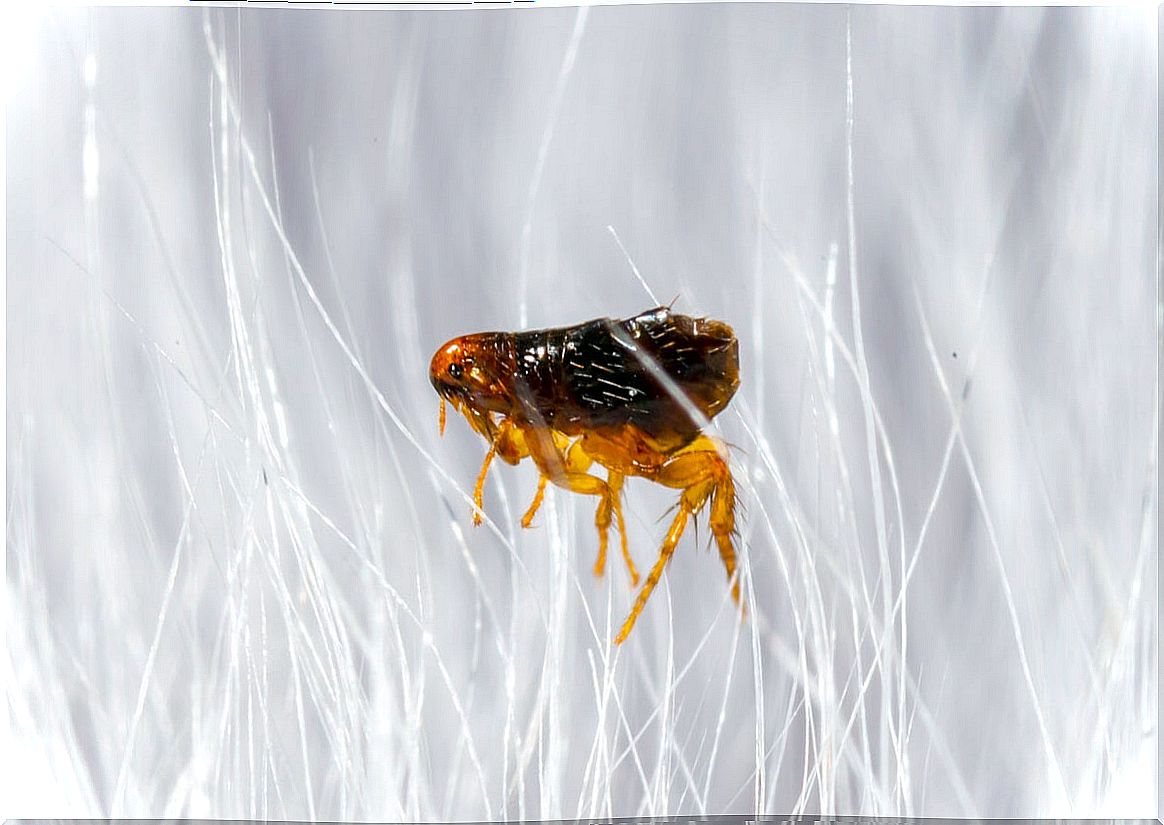What Is Typhus And How Can It Be Cured?
Typhus is a group of diseases caused by Rickettsia bacteria. Although at present they are considered rare diseases, there are still cases and infections.
They are transmitted by parasites that include lice, fleas, and mites. In populations that have adequate sanitary measures, it is considered that there is no transmission. On the contrary, in regions that do not have access to proper hygiene, the risk of contracting them is higher.
Below we explain each of the main types of typhus, the symptoms they produce and their treatment.
How many types of typhus are there?
Generally speaking, there are 3 types of typhus: epidemic, murine and scrub . Although the name is similar, it should not be confused with typhoid fever, caused by another bacteria called Salmonella typhi.
1. Ti fus epidemic
It is a rare disease caused by bacteria Rickettsia prowazekii. It is transmitted by infected lice among people living in crowded conditions. For the transmission it is necessary that the lice can pass from one human to another.
2. Murine typhus
It is caused by the bacteria Rickettsia typhi and is transmitted to people by infected fleas . Fleas become infected by biting already infected animals.
Transmitter animals include rats, cats, and possums. It is very important to mention that it is not transmitted from person to person.
3. Scrub typhus
This type of typhus is the that is transmitted by infected mites . The bacteria that produce it is Orientia tsutsugamushi. The cases occur primarily in rural areas of Southeast Asia, India, Japan, China, and northern Australia.
Although it is a rare disease, people who live or travel to these regions can become infected.

What are the symptoms of typhus?
Fever is the most common symptom in the 3 main types of typhus . Signs usually appear 10 to 14 days after a lice, flea, or transmitting mite bite.
The other symptoms they share are the following:
- Chill.
- Headache.
- Generalized myalgia.
- Skin rash: different for each type of typhus.
In the case of epidemic typhus In addition to the high fever and the symptoms already described, others are added:
- Mental confusion or delirium.
- Nausea and vomiting
- Dry cough with r rapid expiration.
In people with murine typhus, symptoms can appear as early as 4 days after the bite of the infected flea, with p Loss of appetite, nausea and vomiting, stomach pain.
Finally, when it comes to a case of scrub typhus, in addition to fever, the following signs may also appear:
- Confusion or altered mental status.
- A dark scab where the mite bit.
- Swollen glands (adenitis with adenomegaly).
How do you make the diagnostic?
The symptoms of these diseases are very nonspecific. They can resemble many other feverish conditions. The diagnosis is often made by clinical interview. The doctor may suspect it because of the history of having traveled to an endemic area.
Blood tests are also ordered in order to find the causative bacteria. The results of these tests may take time to be ready, so it is common to start treatment before obtaining them.
Typhus treatment
If the doctor has a high suspicion that it is typhus, he will start antibiotic treatment. The antibiotic of choice is one that works against all three types of typhus. Doxycycline is usually prescribed. In adults, ciprofloxacin and tetracycline are also effective.
The prescription should be started as soon as possible. Typically, people with epidemic typhus who are treated promptly make a full recovery. If not, it can be fatal, particularly in adults over the age of 60.
Some patients have a first infection and remain symptom-free for months or years. In rare cases a relapse may appear. This is known as Brill-Zinsser disease. It happens when the immune system is weakened by certain medications, age, or another illness.
In the case of murine typhus, only a small percentage of people who do not receive treatment can die. Those with scrub typhus develop organ failure and bleeding if they do not receive the antibiotic.

How to prevent it
Since there is no vaccine to prevent any of the 3 types of typhus, hygiene is the foundation of prevention.
To avoid the epidemic, a good cleaning should be enough. It is recommended to bathe at least once a week and change clothes regularly.
To protect yourself from murine typhus, avoid contact with fleas that can carry it. When going out into the field you should have a safe distance from wild animals such as rats, flying squirrels and possums. You should also avoid the places where these animals nest.
When traveling to places with scrub typhus, an insect repellent that is approved for clothing should be used. It is also recommended to avoid areas with a lot of vegetation and bushes.
Caution with pets
Although they are considered rare or infrequent diseases, the number of cases has increased in some countries. This happens because hygienic measures have been relaxed, especially with regard to pets.
It is advisable to avoid having wild animals in the houses. You also have to take care that pets do not have contact with rats or wild squirrels.









